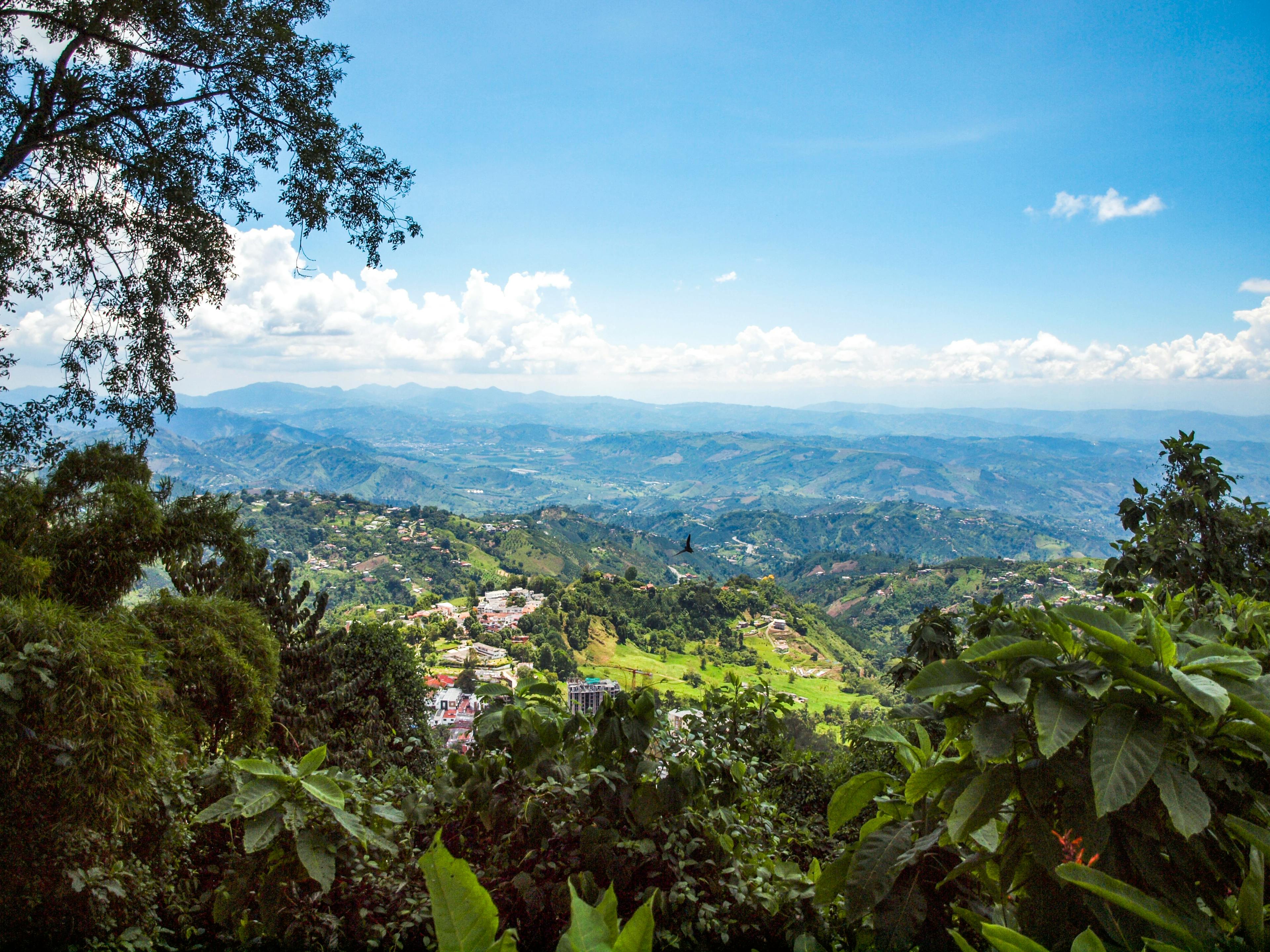By Michelle Thompson
One of Colombia’s most compelling attributes is its coffee cultural landscape. One region in particular known as the Coffee Triangle is a unique set of 18 urban centers located west of the Cordillera. The region symbolizes the country’s coffee production traditions and combines several sustainable farming lands and touristic communities that mostly lie on top of hills that overlook coffee fields.
The Coffee Triangle or Eje Cafetero is known for its long tradition of coffee production. It represents an important part of Colombia’s national identity and culture. The crops are recognized globally as producing some of the world’s richest and highest quality coffee.
Local coffee farmers (cafeteros) have a long-established tradition of using special techniques to farm the land due to its unique geological terrain.
They developed a distinct way of living and working under the same roof. The Antioquian style of architecture finds influence in colonial Spanish style. Built with cob and cane walls and clay roof tiles, the settlements were also influenced by local Indigenous culture. This allowed inhabitants of the area to adapt the lands to coffee growing by using “sliding roofs” made of bamboo layers.
The farms are spread out between the mountain ranges to the east, such as the Nevado de Santa Isabel and the El Ruiz volcano. The highly coveted Valle del Cauca is located in the southern part of the coffee axis. It is recognized by UNESCO as a World Heritage Site.
Colombians have done significant work to preserve the traditions of coffee growing, the colorful buildings in the towns, and the regional culture. Some towns and cities in the Coffee Triangle hold annual events that bring in a high volume of visitors, such as the National Coffee Festival in the town of Calarca and the Carnival del Diablo in Rio Sucio.
Manizales, Pereira, and Armenia form a geographical triangle shape that surrounds the smaller towns in the Coffee Triangle. When you walk the streets of any of these towns, you’re transported back in time to Colombia’s colonial era. The area is not just an economic and cultural hub, but also an ecosystem that is home to some of Colombia’s most impressive species of plants, flowers, and animals.
Retire to the Coffee Triangle
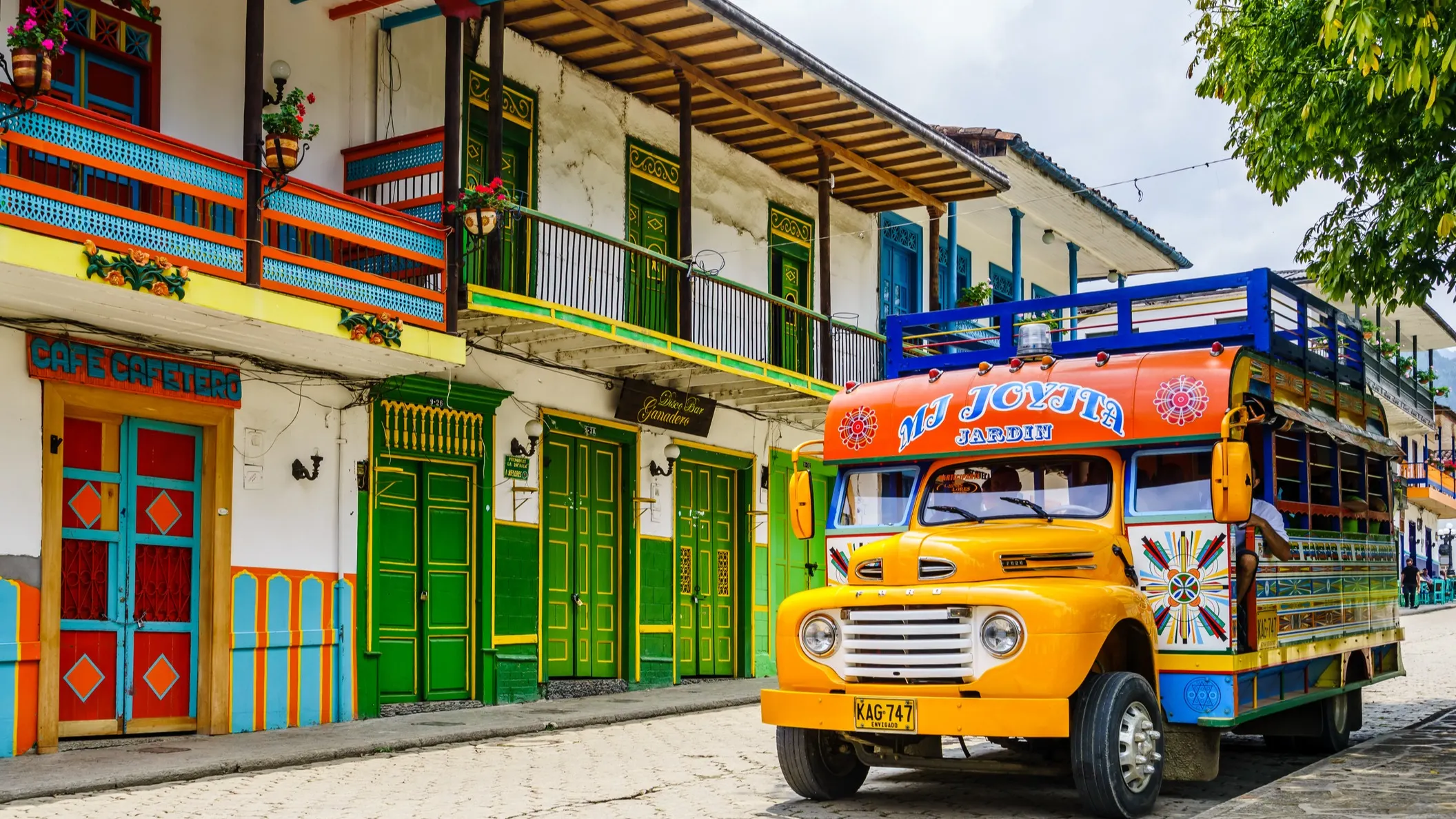
This natural paradise is an excellent location for health-conscious people who love to walk and hike on a regular basis. There are several walking trails to unearth; for example, the one that leads you to the EL Ruiz volcano. Another trail will take you to the Santa Isabel glacier. Visitors can walk through stunning highland forests with dwarfed trees, lagoons, and rock cliffs. You will eventually see snow as you climb higher up the mountain.
The Coffee Triangle area is nestled between the basins of the rivers of Campoalegre, Otun, and La Vieja. It is home to some of the most developed agrotourism initiatives in the country. More importantly, the kindness of its people who are always available to help, and the peace and tranquility the landscape provides, are beyond price. The people of Colombia love their coffee and take pride in preparing it. The coffee plants need a good balance of humidity, rain, and light which is exactly what the region offers.
A few miles from Armenia, you can enjoy some of the best coffee in the world and discover magical nature trails.
YOUR CHANCE TO RETIRE OVERSEAS NOW
YOUR CHANCE TO RETIRE OVERSEAS NOW
Sign up for our free daily IL Postcards e-letter and we'll immediately send you a free report on the WORLD'S #1 RETIREMENT HAVEN—plus 9 more of the most desirable and very affordable destinations where you can upgrade your retirement right now. Each day you'll learn about the best places to retire, travel, buy real estate and enjoy life overseas.
By submitting your email address, you will receive a free subscription to IL Postcards and special offers from International Living and our affiliates. You can unsubscribe at any time, and we encourage you to read more about our Privacy Policy.
Lifestyle in the Coffee Triangle
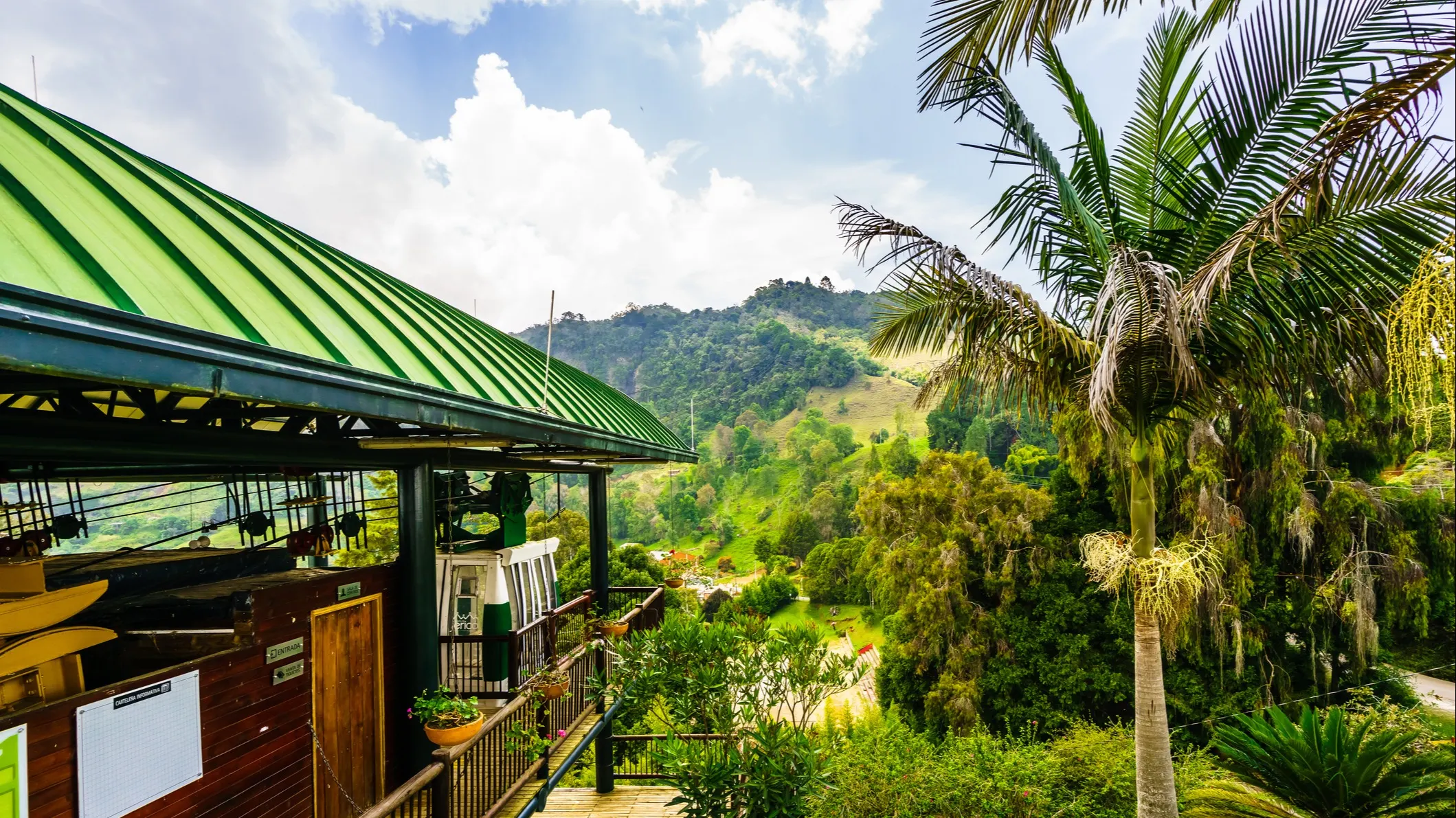
At heart, the Coffee Triangle is a nature lover’s paradise. It gives its residents and visitors access to an awe-inspiring array of natural parks and thereby countless hiking opportunities. Because the regional climate is influenced by its closeness to the mountains, cooler and rainy temperatures are common. There are also a few permanent snowlines in the higher altitude areas.
The paramo of Otun Lake is a rare biome that results from these conditions. It is accessible by a mountainside trail and will provide panoramic views of the hills and fields. A visit to the cloud forest gives away some of the region’s hidden natural secrets. There, you can find rare cactus-like plants such as the frailejones and cojines. These species have adapted to the cool climate and often harsh growing conditions.
A large part of the world’s biodiversity can be found in this region. The Olum Quimbaya Flora and Fauna Sanctuary near the town of Salento work to protect it from extinction. In Pereira, you can find two magnificent botanical gardens, Ukumari and Kamala. They are home to a large number of wild plants and flowers you can only find in the Andes. It is not uncommon to hear the sounds of native birds and spot a few bright butterflies as you walk through these sites.
In contrast to the smaller centers, some of the larger cities like Manizales and Armenia offer several possibilities for dining out, shopping, and taking part in local festivals and cultural events. Many cafés offer coffee demonstrations that teach customers about coffee production and preparation processes. Locals love to ride their bikes in and around the cities. Just outside of Manizales, you can find several hot springs for a relaxing experience, such as Termales San Vicente, located in the town of Santa Rosa de Cabal.
Cost of Living in the Coffee Triangle
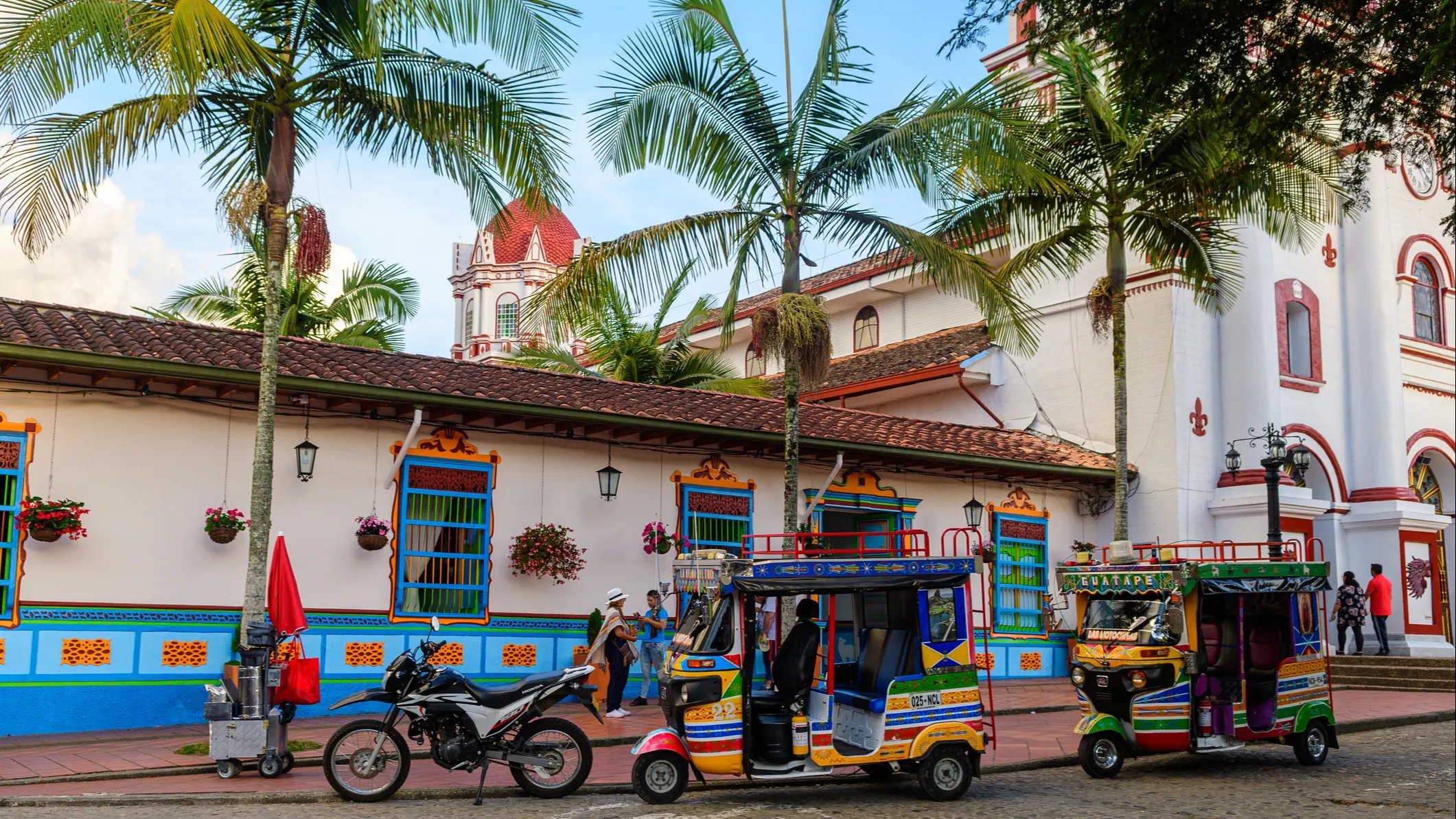
If you dream of living in a country with a year-round warm climate and having a low-key lifestyle, the Coffee Triangle could be the right option for you. While prices will be different for each city, purchasing a home in Colombia is generally much less expensive than in North America.
Buying a four-bedroom home with a pool in the Cerritos neighborhood of Pereira will cost you around $200,000 to $250,000. This is one of the most prestigious areas in the city. In Armenia, the prices are somewhat higher. You can purchase a large four-bedroom home for around $300,000 to $400,000. In Salento, a large four-bedroom country house will run you around $500,000. Although this may seem high, many of the homes there have been converted into hotels and can provide a source of revenue to the business-savvy property investor.
Residents of Colombia have access to a public healthcare system, but many foreigners choose to purchase additional coverage through a private health insurance provider. On average, a private plan will cost around $80 per person, however, this can depend on many factors such as age and medical history.
The following cost of living estimate is based on the basic expenses of a couple renting a two-bedroom apartment in one of the larger centers of the Coffee Triangle.
Monthly Budget Breakdown for a Couple in the Coffee Triangle:
| Expense | U.S. $ |
|---|---|
| Rent (two-bedroom, furnished, city center apartment) | $350 to $400 |
| Utilities (electric, heat, water, trash) | $75 |
| Internet (cell phones for two) | $40 |
| Health insurance (increases with age and health condition) | $160 |
| Transportation | $100 |
| Groceries | $340 |
| Entertainment (dining out, etc.) | $200 |
| Monthly total: | $1,265 to $1,315 |
The cost of living can vary depending on the municipality you choose to live in and the lifestyle you are accustomed to. Dining out frequently and traveling will add to your budget. Some people also choose to pay for cleaning staff and a private driver.
YOUR CHANCE TO RETIRE OVERSEAS NOW
YOUR CHANCE TO RETIRE OVERSEAS NOW
Sign up for our free daily IL Postcards e-letter and we'll immediately send you a free report on the WORLD'S #1 RETIREMENT HAVEN—plus 9 more of the most desirable and very affordable destinations where you can upgrade your retirement right now. Each day you'll learn about the best places to retire, travel, buy real estate and enjoy life overseas.
By submitting your email address, you will receive a free subscription to IL Postcards and special offers from International Living and our affiliates. You can unsubscribe at any time, and we encourage you to read more about our Privacy Policy.
Three Must-See Coffee Triangle Towns
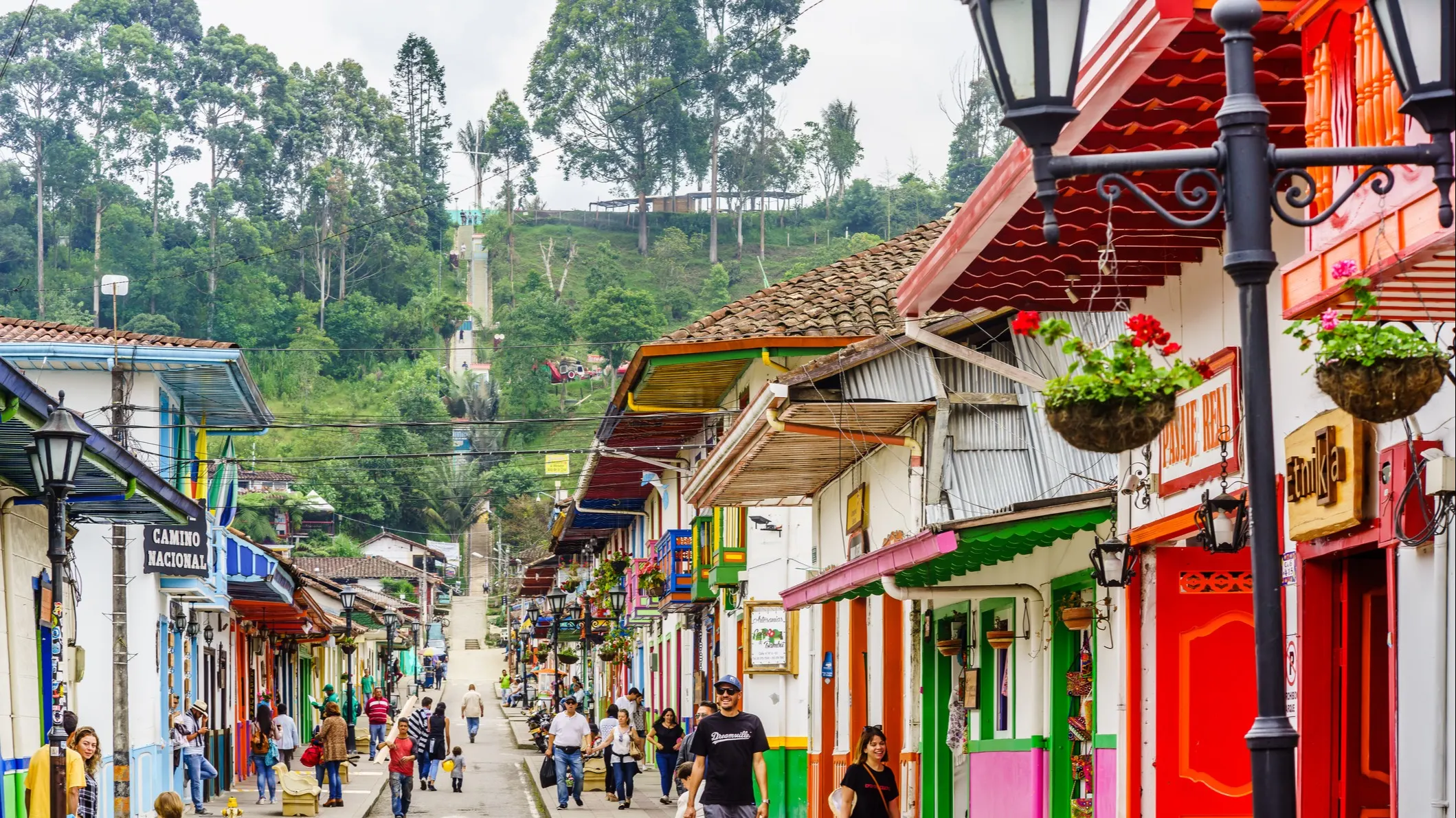
Salento, Riosucio, and Montenegro are surrounded by a dense forest and several waterways. All three of these communities rely on agriculture and tourism for their local economies. Cities in the Coffee Triangle have excellent medical care with modern facilities. However, some rural areas may not have specialized care and you may need to drive an hour or two to access it.
That said, the following are three must-see municipalities that could make for a permanent home if you’re considering moving abroad.
Salento: Cool, Calm, and Inviting
In its early days, the town of Salento was used to house political prisoners of war from Panama and other parts of Colombia. Many of these men were offered farming land after completing their sentences. Today, the town is a popular destination for tourists and has a small but vibrant community of retirees from around the world.
There are many photogenic viewpoints around Salento, as well as several good restaurants and cafés to choose from. You can also book a coffee plantation or hiking tour to learn more about the region’s history and its main industry. Visitors and residents can get around easily by taxi, bus, walking, cycling, or even arranging for a horseback ride.
Salento has a temperate climate and an average annual temperature of 59 F. The town’s microclimate is cooler than some of the other cities and towns in the region. It’s a good idea to bring a sweater and use warm blankets at night. The town is located in the northeast of the Quindio department and 14 miles from Armenia. With a population of 7,247, it is not easily accessible by the main roads. This geographic isolation is what allowed it to preserve its traditional colonial architecture more than other towns.
The town center is listed as a World Heritage Site, and you will find many architectural gems around it such as the Church of Neustra Senora del Carmen. The streets of Salento and their colorful hostels, hotels, and homes are the highlights of the town. The use of large Baroque-style doors and wicket-style windows with striking colors and heavy wood is common and gives the town its charm. They open from the inside and homeowners can leave some sections closed, adding to the charm. The balconies with Baroque and Republican designs add to the aesthetic. Many Salento homes have chambranas or inner courtyards, a characteristic of the Antioquian style.
Riosucio: A Quiet Artisanal Hub
The town of Riosucio is perhaps less known than others in the Coffee Triangle and sees fewer tourists. With just over 61,535 inhabitants, Riosucio has more cultural influence from the Indigenous people who lived in the area. It is perhaps best known for its biennial festival, Carnival of Riosucio, also known as the “Carnival of the Devil.” The celebration is one of the most popular carnivals in Colombia, originating from Spanish, African, and Indigenous traditions, and is a symbol of reconciliation.
Located in the southwest of Risaralda, the town is 1.1 miles above sea level and about 55 miles west of the city of Manizales. Its climate hovers around 68 F year-round. The nearby Ingruma mountain overlooks the village and is a fairly easy climb. It is a short one-hour walk and you can walk to the top without great difficulty. There, you’ll have a striking view of the surrounding landscape.
Riosucio is a two-and-a-half-hour drive from the city of Pereira. You can take a bus or car to pick up supplies or do some shopping. The town has two plazas with historic significance. The building designs in Plaza de San Sebastian are influenced by the Spanish colonial style as many of Colombia’s city centers are. Plaza de La Candelaria’s main point of reference is its commemorative statue of Simon Bolivar. Both squares have museums open to the public for a small fee.
Riosucio is the oldest center for artisanal crafts in the department of Caldas. The tradition of craft-making began with local Indigenous groups who crafted pottery and baskets in Portacheluelo and El Salado and brought them to sell in the town market. Many of the pieces were made from materials found in the natural environment such as wild cane and wood. Popular items included hats and carvings. This tradition continues today and there are weaving workshops available to residents.
YOUR CHANCE TO RETIRE OVERSEAS NOW
YOUR CHANCE TO RETIRE OVERSEAS NOW
Sign up for our free daily IL Postcards e-letter and we'll immediately send you a free report on the WORLD'S #1 RETIREMENT HAVEN—plus 9 more of the most desirable and very affordable destinations where you can upgrade your retirement right now. Each day you'll learn about the best places to retire, travel, buy real estate and enjoy life overseas.
By submitting your email address, you will receive a free subscription to IL Postcards and special offers from International Living and our affiliates. You can unsubscribe at any time, and we encourage you to read more about our Privacy Policy.
Montenegro: Outdoor Adventures
Like many other towns in the Coffee Triangle, Montenegro is a bustling agricultural community. With a population of 41,922 residents, it is an agricultural hub with a multitude of coffee plantations and a well-developed agrotourism industry. Montenegro also relies on the raising of cattle and the production of artisanal goods for its local economy.
The small city is located 6.2 miles from Salento and about the same distance from Armenia. The drive to Salento is around 30 minutes. The National Coffee Park is 2.3 miles away from Montenegro. It has a museum with exhibits that tell the story of the coffee-growing culture and production process in the region. There is also an amusement park and live shows, as well as gondola lifts to get a better view of the surrounding lands.
The temperature in Montenegro is 69.8 F on average, with highs of 84.2 F and lows of 60.8 F. If you crave adventure and the outdoors, Montenegro offers both. Coffee tours, nature and wildlife tours, and boat tours are always available. Timber rafting on the La Vieja river is not your average rubber boat tour. Your guide will navigate the waters with a long wooden stick while you sit comfortably under a canopy and take in the lush forest around you on a handmade wooden raft. The tour is accessible by driving to the nearby town of Quimbaya.
There are also several options for nature walks where you can discover charming waterfalls such as Mico falls and the Cascada Perdida (the lost waterfall) and tour the Rio Verde Natural Reserve. Montenegro has options for all levels of hiking, from beginner to expert. However, there is little signage so you may want to hire a local guide or book a group tour if you’re not familiar with the trails. Noteworthy places include the Parque Los Arrieros which is almost two miles outside of town, and Parque Canopy Los Carocolies, located closer to neighboring Armenia. In fact, the best way to enjoy the countryside is to take a hot air balloon ride with Globos Colombia. The journey will be peaceful as you watch the coffee farms, bamboo forests, and rivers from above.
The town of Montenegro is perhaps not as well known for its architectural prowess as others in the Coffee Triangle. But one of the small city’s hidden gems is the Parroquia San Jose in the Plaza de Bolivar.











